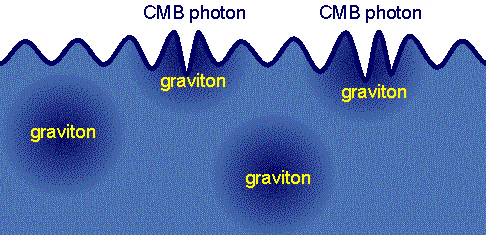This phenomena is related to way, in which light is propagating through so-called metamaterials. The uncertainty about exact source position is the reason, why we cannot talk about information exchange between observer and object, because the amplitude of light travels through interstellar gas in noncausual way. After all, it's not wave itself (group velocity), but an amplitude of light (phase velocity), which is traveling here by superluminal speed in analogy to motion of laser spot along surface of moon. The supersonic sound wave "spreading" was observed during spreading of ultrasound pulses through dense polystyrene dispersions in water, too.

A more intriguing question could be, whether longitudinal component of CMB noise - i.e. superluminal gravitational waves could be interpreted by analogous dispersion of light waves on Higgs field forming vacuum. In this moment I'm unable to decide, whether such perspective is relevant to reality and if it could lead to some new testable predictions. It could be somehow related to so called block-universe concept, by which reality in motion occurs by inhomogeneous spreading of information through Aether lattice at rest - which I personally consider biased toward atemporal perspective of Universe.




No comments:
Post a Comment